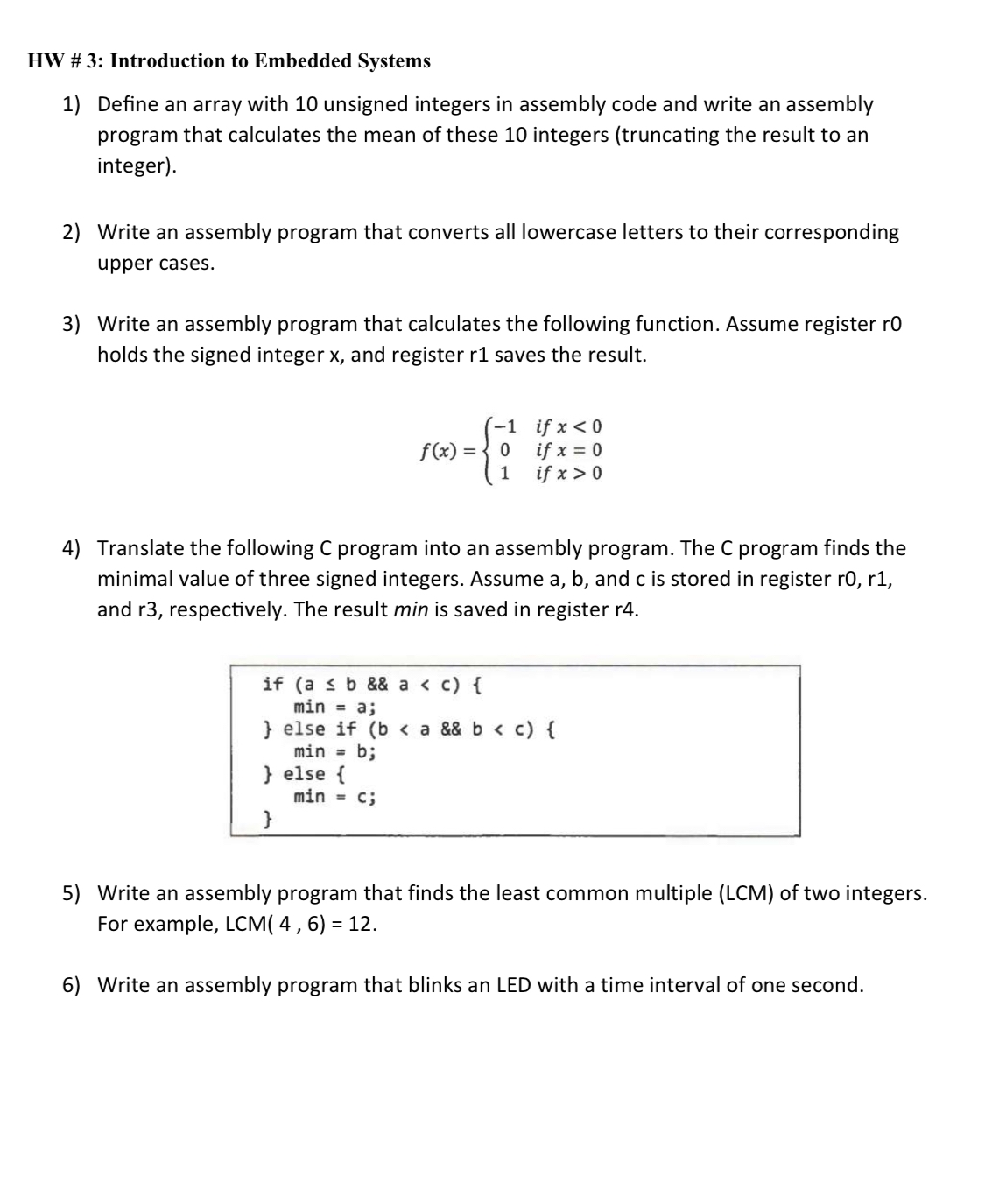1) Define an array with 10 unsigned integers in assembly code and write an assembly program that calculates the mean of these 10 integers (truncating the result to an integer). 2) Write an assembly program that converts all lowercase letters to their corresponding upper cases. 3) Write an assembly program that calculates the following function. Assume register r0 holds the signed integer x, and register r1 saves the result. f(x)=10 if x<0, 0 if x=0, and 1 if x>0. 4) Translate the following C pro


 25% off with code “SUMMER”
25% off with code “SUMMER”
